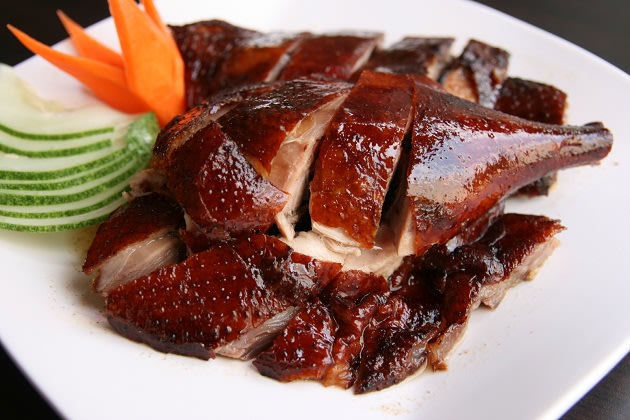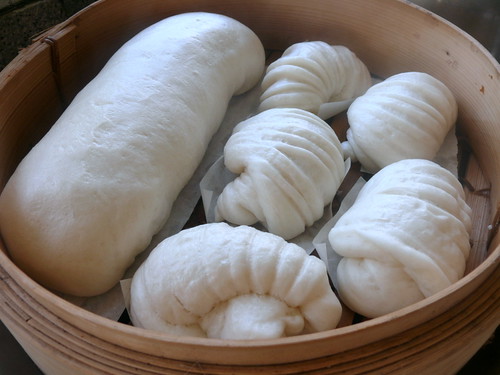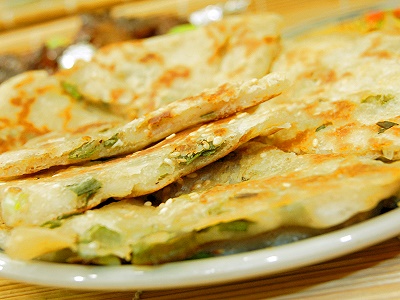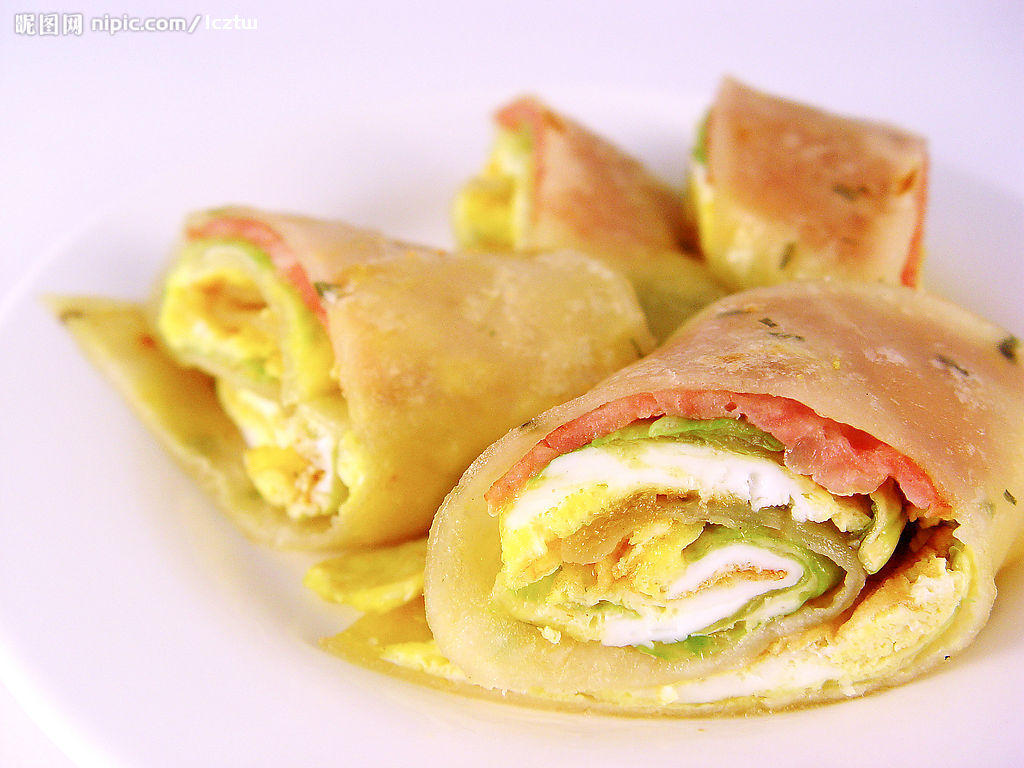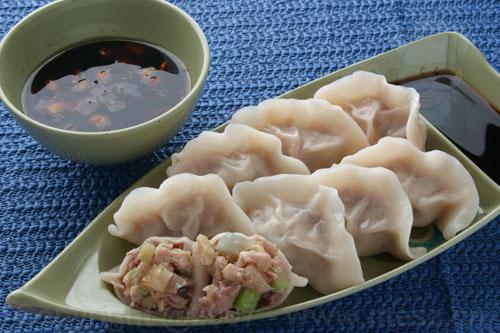ahfatzia
SENIOR MEMBER

- Joined
- Feb 22, 2012
- Messages
- 2,521
- Reaction score
- 0
Where to find the best street food in Asia
Nirmal Ghosh, Thailand Correspondent
Pungent blasts of red chilli, waves of redolent spices, hot griddles, the hiss of gas and the sizzle of hot oil, huge vats and woks and leaping flames are all part of the crowded, noisy Bangkok sidewalk experience.
Most of the citys population eat outdoors, where you can get a good meal for 30 baht (S$1.20) and a positively excellent meal for around 60 baht. This makes Bangkok one of the cheapest big cities in the world to eat out in, if one sticks to the street. And the flavours are the envy of many a five-star chef.
Thai food may have been refined in the royal court, but it is alive in the streets. Food stalls normally start with simple trolleys with a built-in stove and storage area. Once established, food stalls expand. The sidewalk fills up with light foldable tables and chairs.
Thais are fussy about hygiene, which makes street food fairly safe; raw food is normally protected at least by a glass pane. But check the surroundings before eating; avoid the place if there are open drains or gutters around, for example, or if the dishes are being washed in a tub of dirty water by the roadside.

KUANG HENG Petchaburi Road, at the Prathunam intersection opposite the new Novotel hotel
The only dish this 15-year-old stall serves is khao man gai, a variant of Hainanese chicken rice; the rice is cooked in a lighter chicken broth and shaved ginger and green chillies give the light body a sharp edge. A standard plate is a light lunch or dinner for 30 baht and another 10 baht will give you some extra slices of chicken.
JOK SAM YAN

around Chamchuri Square everyone knows the stall.
This stall (below) has been in business for more than 60 years and serves about 1,000 bowls daily of jok, or soupy rice porridge with a generous helping of pork morsels at 35 baht without an egg, and 40 baht with an egg.
MAE AM

On Rama IV road at Klong Toey
This stall has been in business 20 years, serving up to 150 dishes of pad thai arguably Thailands national dish on an average day. Pad thai is a mix of rice noodles, banana flower, garlic, ground peanuts, tiny dried shrimps, shallots, sugar, tamarind paste, ground chillies, a slice of lime and chives but there are dozens of different ways to cook it and balance the different flavours.
ISAN RODDED

Soi Rang Nam, off Phaya Thai road
This place (rod ded means tasty) cooks up traditional dishes from the north-eastern region known as Isan. A dish of half a roasted chicken, a som tam, a sticky rice with fiery dark red jim jaew sauce and a bottle of water, all good for two, will set you back 150 baht. The place has been in operation for 30 years and is always packed.
Nirmala Ganapathy, India Correspondent
Residents of Delhi follow a useful rule when it comes to their pick of street food: It has to be fresh and made hot in front of them.
So it is not uncommon to see people standing cheek by jowl at street corner eateries, watching and waiting as their jalebis, a pretzel-shaped sweet, are dunked in boiling oil and then soaked in syrup.
In a city where food hygiene is a concern, a good rule of thumb is to just follow the crowds.
The highest concentration of street food is in old Delhi, a popular tourist destination in which is located at the Red Fort, a 17th-century fort complex constructed by Mughal emperor Shah Jahan.
Lip-smacking snacks are found in its narrow and chaotic lanes, where sometimes there is little space to even stand and the only way to reach it is on foot or by cycle rickshaws
In other parts of the city, roadside eateries range from hole-in-the wall outfits to large establishments, where the food preparation extends from the kitchen to the street.
PT. GAYA PRASAD SHIV CHARAN

34 Paranthewala Gali, Chandni Chowk, Old Delhi
In the late 1960s, there were more than a dozen makers of paranthas fried flat breads in this one narrow lane in Delhi, hence the name paranthawala gali, which basically means a lane of parantha sellers.
Now only three to four remain, with Gaya Prasad Shiv Charan (above) remaining the oldest, established in 1872. Once there, the breads (35 rupees, or $0.80, to 55 rupees) are worth it. There are a variety of stuffings to choose from: potato, crushed cauliflower, white radish, cashew nut, raisins, crushed badam and banana for the more adventurous. The paranthas are served with sweet tamarind chutney, mint chutney, chillies, mixed vegetable pickle and potato curry. Be prepared to stand around to eat.
NATRAJ

1396, Chandni Chowk, Old Delhi
Natraj, more like a food kiosk, sells aloo tikki, a spicy potato cutlet, and dahi bhalla (left), a yogurt- -based snack.
The golden brown aloo tikki (35 rupees) is served with mint and tamarind chutney for a sweet and sour experience.
The surprise is the spicy filling, adding to the burst of flavours. Its other speciality, the dahi bhalla (35 rupees), is the perfect snack for a hot summer afternoon. Fried dumplings are soaked in water to soften them and then dunked in cool fresh yogurt topped with mint and tamarind chutney. These are two street food staples in Delhi, but this is undoubtedly the best version in town.
PRINCE PAN HOUSE

29/5 M Block Market, Greater Kailash I, New Delhi
Women carrying designer bags and young college students take a break from shopping to eat at the roadside eatery, which stocks everything from drinks such as spiced lemon juice to spicy fried potatoes and crispy snacks.
But the speciality is the gol gappa (five for 30 rupees), a crispy ball made out of wheat and filled with tamarind, chilli, potato, onion, chickpeas and spiced water. Each gol gappa is assembled (above) right in front of the customer and it has to be eaten whole so that the water does not spill out. Prince Pan House uses only bottled mineral water, so you do not have to worry about the origin of the spiced water.
Also try the sweet paan or betel leaf wrapped around a filling of coconut, fruit and rose petal preserves and various spices (25 rupees to 40 rupees). For the more adventurous, there are strawberry and chocolate flavours to choose from.
OLD FAMOUS JALEBI WALA
1797 Dariba Corner, Chandni Chowk, Old Delhi
This corner shop specialises in only one sweet and has mastered it. Foreigners and locals crowd the corner eatery for a plate of the piping hot jalebis. The golden-coloured jalebis (35 rupees for 100g) are made of plain white refined flour. They are deep fried in loops to resemble a messy pretzel, and then soaked in sugar syrup. Bite into a jalebi and the sugar syrup oozes out. There is no way of eating the jalebi without getting sticky fingers.
Established in 1884 by Nemchand Jain, the shop has been handed down through five generations.
BENGALI SWEET HOUSE
27-33 Bengali Market, New Delhi
The sweet house is in a prime location in central Delhi. One must-try is the chole batura (70 rupees). The dish consists of fried bread called batura which is eaten with the choley, a spicy chickpea dish. The dish comes with two puffed-up baturas and chickpeas in a steel plate and bowl. The perfect accompaniment to wash down the spiciness is the sweet lassi, a sweetened yogurt drink (40 rupees). Or if that does not do the trick, try the ras malai, cottage cheese dumplings soaked in sweetened, thickened milk, flavoured with cardamom (44 rupees for two pieces).
Relax - Where to find the best street food in Asia
Nirmal Ghosh, Thailand Correspondent
Pungent blasts of red chilli, waves of redolent spices, hot griddles, the hiss of gas and the sizzle of hot oil, huge vats and woks and leaping flames are all part of the crowded, noisy Bangkok sidewalk experience.
Most of the citys population eat outdoors, where you can get a good meal for 30 baht (S$1.20) and a positively excellent meal for around 60 baht. This makes Bangkok one of the cheapest big cities in the world to eat out in, if one sticks to the street. And the flavours are the envy of many a five-star chef.
Thai food may have been refined in the royal court, but it is alive in the streets. Food stalls normally start with simple trolleys with a built-in stove and storage area. Once established, food stalls expand. The sidewalk fills up with light foldable tables and chairs.
Thais are fussy about hygiene, which makes street food fairly safe; raw food is normally protected at least by a glass pane. But check the surroundings before eating; avoid the place if there are open drains or gutters around, for example, or if the dishes are being washed in a tub of dirty water by the roadside.

KUANG HENG Petchaburi Road, at the Prathunam intersection opposite the new Novotel hotel
The only dish this 15-year-old stall serves is khao man gai, a variant of Hainanese chicken rice; the rice is cooked in a lighter chicken broth and shaved ginger and green chillies give the light body a sharp edge. A standard plate is a light lunch or dinner for 30 baht and another 10 baht will give you some extra slices of chicken.
JOK SAM YAN

around Chamchuri Square everyone knows the stall.
This stall (below) has been in business for more than 60 years and serves about 1,000 bowls daily of jok, or soupy rice porridge with a generous helping of pork morsels at 35 baht without an egg, and 40 baht with an egg.
MAE AM

On Rama IV road at Klong Toey
This stall has been in business 20 years, serving up to 150 dishes of pad thai arguably Thailands national dish on an average day. Pad thai is a mix of rice noodles, banana flower, garlic, ground peanuts, tiny dried shrimps, shallots, sugar, tamarind paste, ground chillies, a slice of lime and chives but there are dozens of different ways to cook it and balance the different flavours.
ISAN RODDED

Soi Rang Nam, off Phaya Thai road
This place (rod ded means tasty) cooks up traditional dishes from the north-eastern region known as Isan. A dish of half a roasted chicken, a som tam, a sticky rice with fiery dark red jim jaew sauce and a bottle of water, all good for two, will set you back 150 baht. The place has been in operation for 30 years and is always packed.
Nirmala Ganapathy, India Correspondent
Residents of Delhi follow a useful rule when it comes to their pick of street food: It has to be fresh and made hot in front of them.
So it is not uncommon to see people standing cheek by jowl at street corner eateries, watching and waiting as their jalebis, a pretzel-shaped sweet, are dunked in boiling oil and then soaked in syrup.
In a city where food hygiene is a concern, a good rule of thumb is to just follow the crowds.
The highest concentration of street food is in old Delhi, a popular tourist destination in which is located at the Red Fort, a 17th-century fort complex constructed by Mughal emperor Shah Jahan.
Lip-smacking snacks are found in its narrow and chaotic lanes, where sometimes there is little space to even stand and the only way to reach it is on foot or by cycle rickshaws
In other parts of the city, roadside eateries range from hole-in-the wall outfits to large establishments, where the food preparation extends from the kitchen to the street.
PT. GAYA PRASAD SHIV CHARAN

34 Paranthewala Gali, Chandni Chowk, Old Delhi
In the late 1960s, there were more than a dozen makers of paranthas fried flat breads in this one narrow lane in Delhi, hence the name paranthawala gali, which basically means a lane of parantha sellers.
Now only three to four remain, with Gaya Prasad Shiv Charan (above) remaining the oldest, established in 1872. Once there, the breads (35 rupees, or $0.80, to 55 rupees) are worth it. There are a variety of stuffings to choose from: potato, crushed cauliflower, white radish, cashew nut, raisins, crushed badam and banana for the more adventurous. The paranthas are served with sweet tamarind chutney, mint chutney, chillies, mixed vegetable pickle and potato curry. Be prepared to stand around to eat.
NATRAJ

1396, Chandni Chowk, Old Delhi
Natraj, more like a food kiosk, sells aloo tikki, a spicy potato cutlet, and dahi bhalla (left), a yogurt- -based snack.
The golden brown aloo tikki (35 rupees) is served with mint and tamarind chutney for a sweet and sour experience.
The surprise is the spicy filling, adding to the burst of flavours. Its other speciality, the dahi bhalla (35 rupees), is the perfect snack for a hot summer afternoon. Fried dumplings are soaked in water to soften them and then dunked in cool fresh yogurt topped with mint and tamarind chutney. These are two street food staples in Delhi, but this is undoubtedly the best version in town.
PRINCE PAN HOUSE

29/5 M Block Market, Greater Kailash I, New Delhi
Women carrying designer bags and young college students take a break from shopping to eat at the roadside eatery, which stocks everything from drinks such as spiced lemon juice to spicy fried potatoes and crispy snacks.
But the speciality is the gol gappa (five for 30 rupees), a crispy ball made out of wheat and filled with tamarind, chilli, potato, onion, chickpeas and spiced water. Each gol gappa is assembled (above) right in front of the customer and it has to be eaten whole so that the water does not spill out. Prince Pan House uses only bottled mineral water, so you do not have to worry about the origin of the spiced water.
Also try the sweet paan or betel leaf wrapped around a filling of coconut, fruit and rose petal preserves and various spices (25 rupees to 40 rupees). For the more adventurous, there are strawberry and chocolate flavours to choose from.
OLD FAMOUS JALEBI WALA
1797 Dariba Corner, Chandni Chowk, Old Delhi
This corner shop specialises in only one sweet and has mastered it. Foreigners and locals crowd the corner eatery for a plate of the piping hot jalebis. The golden-coloured jalebis (35 rupees for 100g) are made of plain white refined flour. They are deep fried in loops to resemble a messy pretzel, and then soaked in sugar syrup. Bite into a jalebi and the sugar syrup oozes out. There is no way of eating the jalebi without getting sticky fingers.
Established in 1884 by Nemchand Jain, the shop has been handed down through five generations.
BENGALI SWEET HOUSE
27-33 Bengali Market, New Delhi
The sweet house is in a prime location in central Delhi. One must-try is the chole batura (70 rupees). The dish consists of fried bread called batura which is eaten with the choley, a spicy chickpea dish. The dish comes with two puffed-up baturas and chickpeas in a steel plate and bowl. The perfect accompaniment to wash down the spiciness is the sweet lassi, a sweetened yogurt drink (40 rupees). Or if that does not do the trick, try the ras malai, cottage cheese dumplings soaked in sweetened, thickened milk, flavoured with cardamom (44 rupees for two pieces).
Relax - Where to find the best street food in Asia






















 Combine it with some Youtiao and you get the best thing ever, Zhaliang.
Combine it with some Youtiao and you get the best thing ever, Zhaliang.
